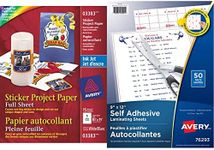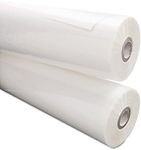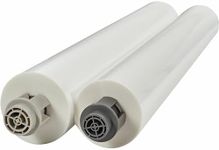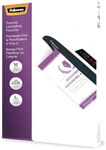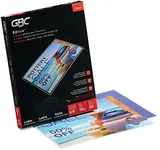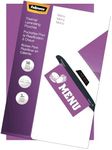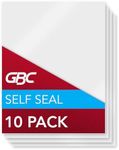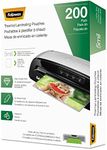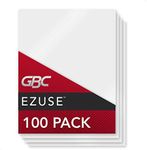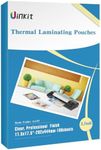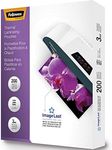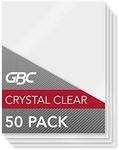Buying Guide for the Best Laminating Sheets
Choosing the right laminating sheets can make a big difference in how well your documents, photos, or crafts are protected and presented. Laminating sheets come in various types and sizes, and picking the right one depends on what you plan to laminate and how you want the finished product to look and feel. Understanding the key features will help you select sheets that match your needs, whether you're preserving important papers, making ID cards, or creating durable teaching materials.Thickness (measured in mils)Thickness is one of the most important specs for laminating sheets and is usually measured in mils (thousandths of an inch). Thicker sheets provide more rigidity and protection, while thinner sheets are more flexible and easier to handle. Common thicknesses range from 3 mil (thin and flexible, good for items that need to be folded or handled often) to 10 mil (very rigid, best for items that need maximum protection like ID cards or signage). To choose the right thickness, think about how much handling your laminated item will get and whether you want it to be stiff or bendable.
SizeLaminating sheets come in a variety of sizes, from small card-sized sheets to large poster-sized ones. The size you need depends on what you are laminating. It's best to pick a sheet that is slightly larger than your item to ensure a good seal around the edges. If you laminate a lot of different-sized items, consider getting a variety pack or sheets that can be cut to size. Always match the sheet size to your project for the best results.
Finish (Glossy or Matte)The finish of a laminating sheet affects both the look and feel of your laminated item. Glossy sheets make colors pop and give a shiny, professional appearance, but they can show fingerprints and glare under lights. Matte sheets reduce glare and are easier to write on, making them a good choice for teaching materials or items that will be handled often. Choose glossy for photos and presentations, and matte for items that need to be read easily or written on.
Type (Thermal or Self-Adhesive)Laminating sheets are either thermal (require a laminating machine and heat to seal) or self-adhesive (no machine needed, just peel and stick). Thermal sheets usually provide a stronger, more durable seal, but you need access to a laminator. Self-adhesive sheets are convenient for quick jobs or when you don't have a machine, but may not be as durable. Pick thermal if you laminate often and have a machine, or self-adhesive for occasional, small, or on-the-go projects.
ClarityClarity refers to how clear and transparent the laminating sheet is after sealing. High-clarity sheets keep your documents and images looking sharp and easy to read, while lower-clarity sheets may look cloudy or dull. If you are laminating photos, certificates, or anything where appearance is important, look for sheets that advertise high clarity. For less critical uses, such as temporary signs, clarity may be less important.
